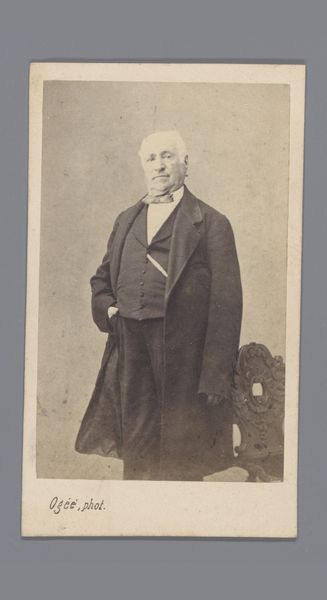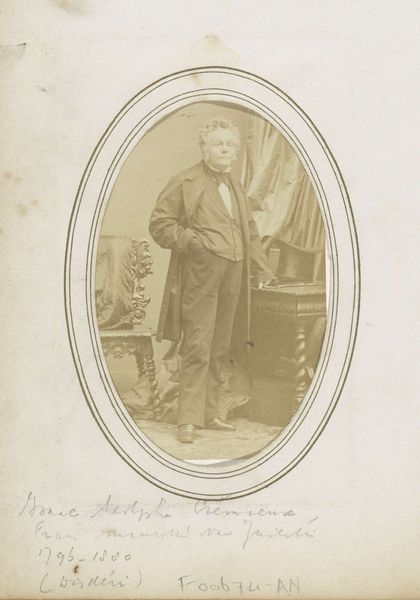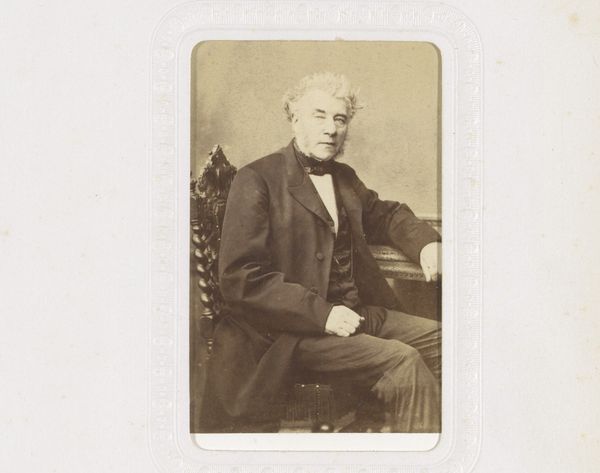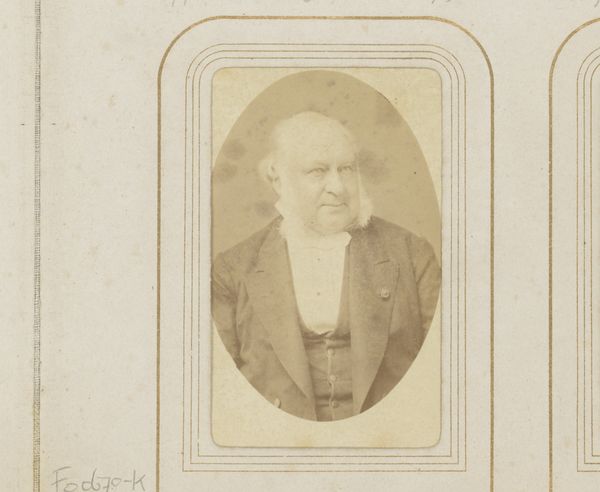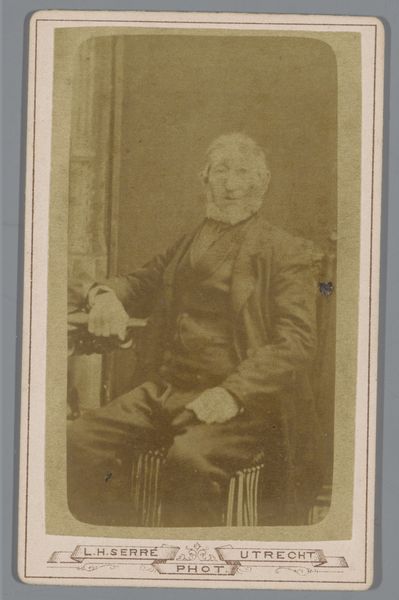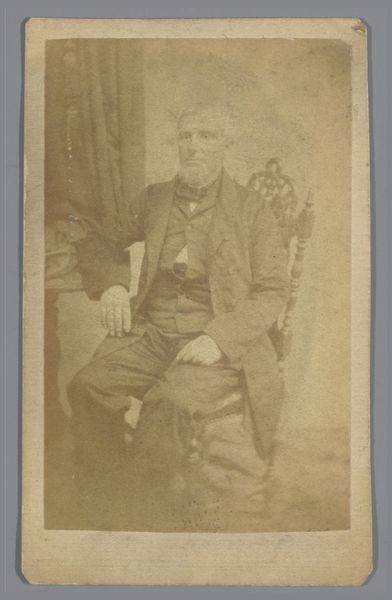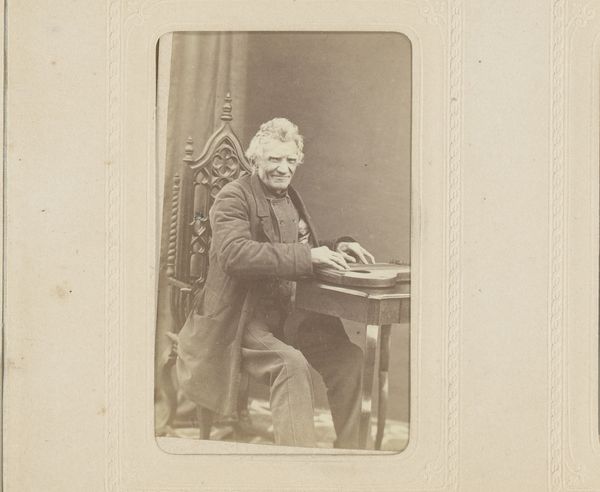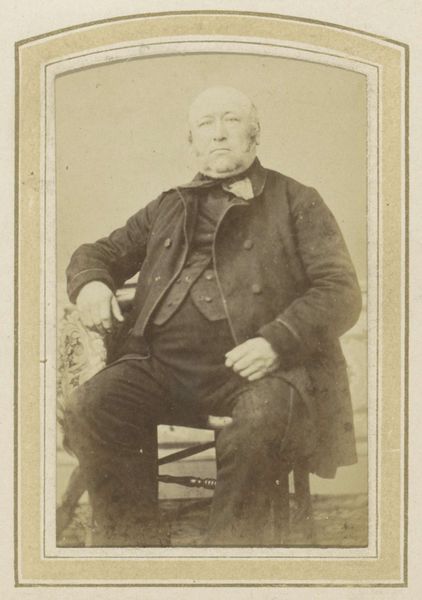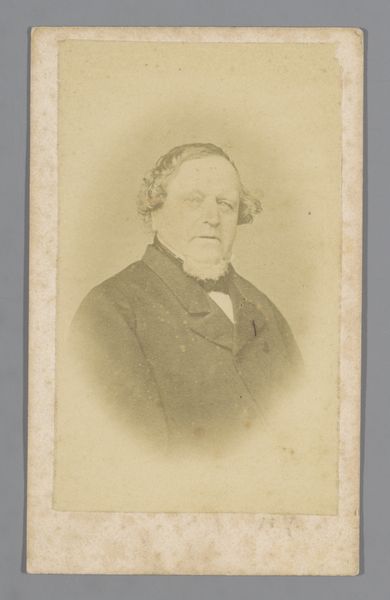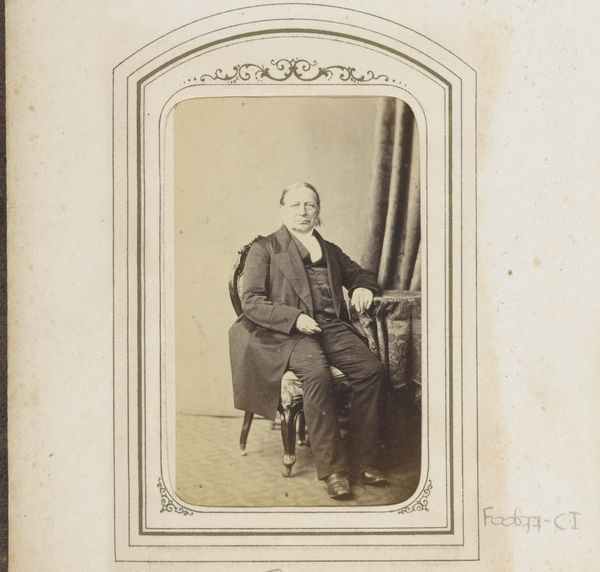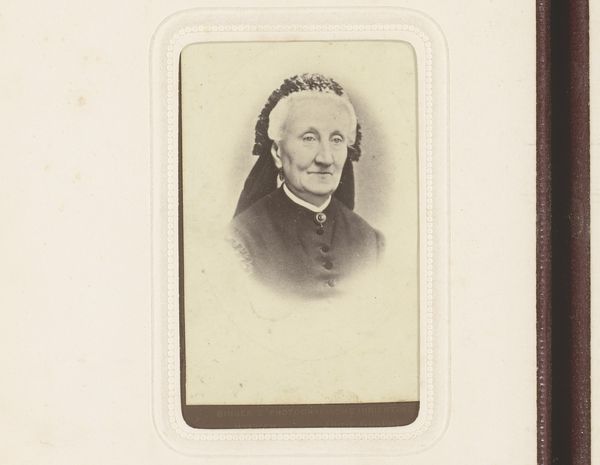
photography, gelatin-silver-print
#
portrait
#
photography
#
coloured pencil
#
gelatin-silver-print
#
realism
Dimensions: height 99 mm, width 61 mm
Copyright: Rijks Museum: Open Domain
Editor: This is a photograph, "Portrait of an Unknown Old Man in a Coat" by Hendrik Hermanus Roelse, made sometime between 1855 and 1872, using a gelatin-silver print. It's a pretty straightforward portrait, a man looking directly at the viewer, but I'm struck by the intimacy. What stands out to you? Curator: Well, considering its period, this photograph speaks volumes about the evolving role of photography within 19th-century society. We have to think about how photography democratized portraiture. Before this, only the wealthy could afford painted portraits. What do you think this shift meant for society's perception of itself? Editor: I guess it meant more people could see themselves represented? That’s pretty significant. Curator: Precisely. It moved image-making away from the exclusive domain of the elite and put it, quite literally, in the hands of a burgeoning middle class. This also influenced the artistic movements of the time, impacting painting, right? Think about the Realism movement emerging then; wouldn't accurate depiction of everyday life resonate even more powerfully now? Editor: It would! Knowing that this photograph could capture "real" people humanizes it and challenges older norms around what art should depict, right? Did photography change how museums operated? Curator: Absolutely! Photography soon became a crucial tool for documenting collections, spreading knowledge, and shaping how museums presented art. Photographs allowed a much wider audience to “visit” museums without being physically present, profoundly influencing the public’s access to and understanding of art history. So what’s your feeling now towards this photo? Editor: Thinking about how revolutionary this kind of image was at the time definitely adds a new layer for me. I initially saw a simple portrait, but now I understand its deeper significance as a sign of social change and how museums were impacted. Thanks! Curator: And thinking about these aspects brings new appreciation to the field!
Comments
No comments
Be the first to comment and join the conversation on the ultimate creative platform.
